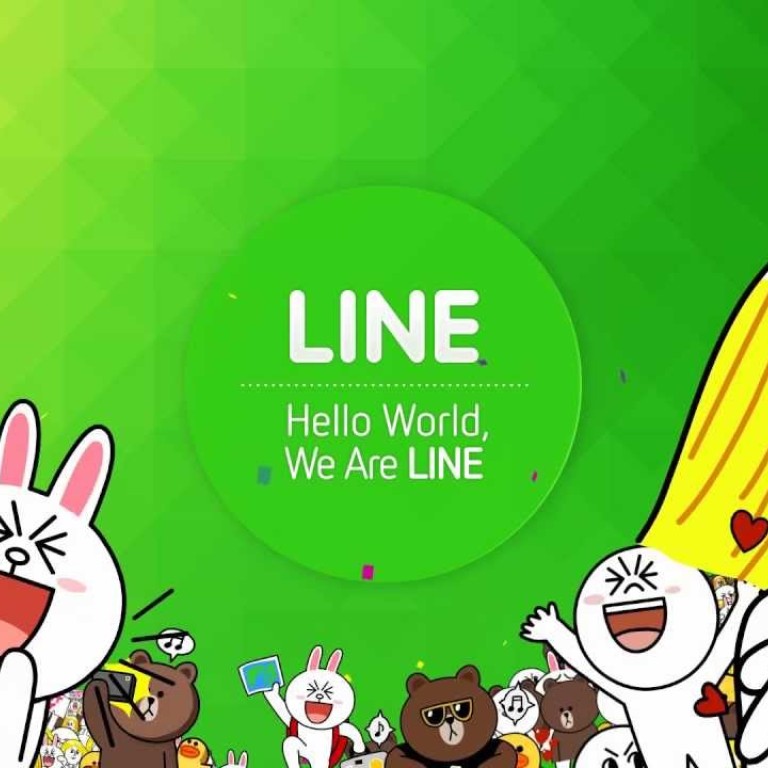
How Line is using cute stickers and local knowledge in messaging app turf war with WhatsApp, WeChat
Pick any country in Asia and its people have their own favourite instant messaging app.
Mainland Chinese vote overwhelmingly in favour of Tencent’s WeChat, which allows them to post photos and videos among their social circle, launch virtual shops and make online transactions, among a growing array of services.
People in Hong Kong prefer Facebook-owned WhatsApp, partly out of data-privacy concerns relating to WeChat. WhatsApp ranks as the world’s favourite messaging app with over 600 million active users, but offers fewer services.
In Thailand or Indonesia, your local friends are more likely to use Line, a Japan-born app launched in 2011 that also thrives in its home country but has struggled to expand globally despite its over-arching ambitions and pioneering use of "stickers".
In February, it said it had attracted 600 million users, with about one-third ranking as monthly active users. It expects the total number to grow to 700 million by Christmas.
Like WeChat, it is emerging as an entertainment and social platform offering mobile payments, taxi-hailing, online shopping and music streaming. It is now experimenting with greater connectivity with “the internet of things" as more physical objects are embedded with sensors and software to form broader digital and online ecosystems.
Line hopes to hop over cultural boundaries in Asia by localising its products to tap into, rather than ignore, cultural differences, according to its top executives.
It has recently started opening shops in major Asian cities like Shanghai, Hong Kong and Seoul selling coffee and gifts.
Such moves contrast with a change of tack this year by WeChat, known as Weixin in China.
But Line chief executive Takeshi Idezawa said Asia is now his primary focus given the rapid growth of smartphone adoption and interest in social media in the region.
Speaking at a recent two-day conference for tech start-ups in Hong Kong, he said Asia’s middle class is expected to grow to 1.8 billion people by 2020. As of last year, the world’s most populous continent had 4.427 billion people.
Line is prioritising further growth in Japan, Thailand, Taiwan and Indonesia by catering to local tastes, Idezawa said.
To attract more users in Indonesia, a predominantly Muslim country that fasts in June for Ramadan, Line launched animated characters in 2014 commemorating the festival.
Users apparently warmed to its stickers, or cute moving images of a bear and bunny politely rejecting food during the holy month.
This was part of a broader push to popularise the app in the country by NHN, the web giant behind Line, which filled local radio and TV airwaves with advertisements and rolled out prize-winning competitions there.
The results were shocking: in just six months, from April to September 2014, Line saw its number of registered users in Indonesia triple from 10 million to 30 million, making it the company's No. 2 market outside of Japan.
NHN, a South Korean internet portal operator, split into Naver Corp and an entertainment subsidiary in September 2013. The unit that came up with Line was based in Japan and composed of engineers from both countries.
In August 2014, Line, which Idezawa told the Post he is now considering taking public, also set its sights on the US.
It partnered with singer-songwriter Ariana Grande, who one year earlier was voted new artist of the year at the American Music Awards, to gain exclusive early access to her new album My Everything.
Yet Line continues to struggle in America, where it has failed to break inside the 100 best free apps for Apple’s iOS, according to Appannie.com, a mobile analytics site. Facebook Messenger ranks No. 2 on this year’s list. Snapchat is No. 6.
Idezawa said that as Line continues to roll out more services and connect in more ways with electronic and smart appliances in people’s homes, the day will soon come when it can tell users how many beers they have left in the fridge.

